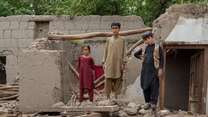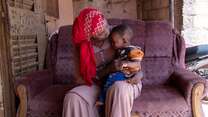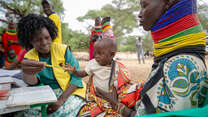A new era for foreign aid is upon us - whether
we like it or not. Global needs and extreme
poverty are escalating and increasingly
concentrated in countries where we see an
alarming convergence of conflict and climate
change. At the very moment these needs are
rising, traditional donor funding is sharply
declining - forcing difficult choices about who
receives assistance.
In 2024, the world faced a nearly $25 billion
gap between funds required for UN appeals and
funds received at a time when nearly 300 million
people are in need of humanitarian assistance.
This gap is now set to more than double as
United States (US) and European donors slash
their Official Development Assistance (ODA)
budgets. Aid should be focused on addressing
humanitarian needs and ending poverty. Yet,
OECD data demonstrates how ODA is being
spread increasingly thinly. Health spending is
around 10% of the total. Humanitarian aid
averaged around 14%. Yet, spending on global
challenges like climate mitigation, infectious
disease control, costs for refugees in donor
countries, international peace and security, and
research and development is up from an average
of 37% of bilateral ODA in 2007-2011, to
around 60% in 2017-2021.
While the US is not the only donor to reduce aid
spending, it was the largest. In 2024, the US
was the biggest Development Assistance
Committee (DAC) donor, contributing $63.3
billion, or 30% of all DAC ODA. In the same year
the US funded around 43% of the global
humanitarian appeal. The impacts of the cuts on
affected populations are devastating.
In Sudan aid cuts have forced the closure of
80% of communal kitchens, leaving millions
without access to food. Those who have fled to
Chad to escape the violence in Sudan have lost
access to US funded food, water, and education
programmes. By some estimates, US cuts to
global health spending could cost 25 million lives
in the next 15 years. When aid is needed most,
the closure or reduction of key services
undermines our ability to monitor famine or
displacement to deliver aid, and is degrading
the ability of local organisations and in some
cases governments, to deliver services and
protect populations from future risks. In an
interconnected world, risks such as disease
outbreaks do not always remain local. Cuts to
funding for healthcare delivery at national and
community level and vaccination campaigns in
fragile countries risks undermining global health
security and exposing the global population to
graver risks.
IRC analysis shows that needs and extreme
poverty are increasing concentrated in fragile
and conflict affected states. At the same time,
the aid budget is being reduced and spread
across multiple priorities, undermining spending
on what aid does best: delivering life-saving
assistance where it is most needed, establishing
a pathway towards lasting development. To
maintain progress with fewer resources, the aid
system must prioritise its work on where it is
most needed and can be most impactful. This
requires new thinking on where aid is spent,
what it is spent on, how it is delivered, and how it
is funded.



